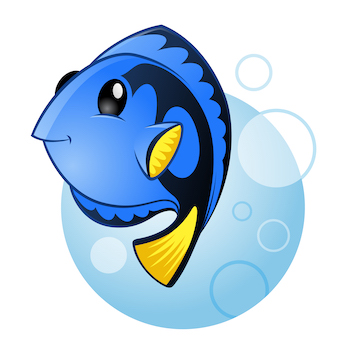B2B Digital Advertising: Lessons From a Fish
- At times, digital advertising can feel like a new or unknown situation and a never-ending fight
- Marketers may encounter new landscapes, new players and new terminology as they navigate the digital advertising landscape
- A constant desire to adopt, operationalize and optimize can equip marketers with the required knowledge you need to get ahead
In the movie Finding Nemo, Dory, the blue tang fish, repeatedly utters the catchy phrase “just keep swimming.” It’s meant to symbolize a never-ending fight that you should never give up, and the need to be brave in new and unknown situations.

At times, digital advertising can feel like a new or unknown situation and a never-ending fight. For marketers who come from a traditional marketing background or the marketing technology (martech) world, the advertising technology (ad tech) landscape can feel like a pretty scary place. But if we look at digital advertising through Dory’s fish-eyed lens, maybe it won’t seem so scary after all. (Disclaimer: I’m well aware you can’t swim through a landscape, so if you find yourself getting hung up on that, just keep swimming!) Keep the following in mind:
- New landscapes. Though the ad tech landscape may be different from the martech landscape, they’re still in the same region. Whether you’re using martech data to target and segment ad tech programs or feeding ad tech outcomes into downstream martech programs and the Demand Waterfall®, the two are linked together like two fields of different crops in the same farm.
- New players. With every new landscape come new players within that landscape. For Nemo, these could be moonfish, starfish, blowfish or turtles – and for B2B marketers, they could be ad tech vendors and/or agencies. To communicate with these new players, marketers need to ensure they stay focused on their goals, and then evaluate the ability of the vendor platform and/or agency to meet those goals through their specific capabilities. However, making sure presented capabilities align to desired goals requires both parties to speak the same language.
- New terminology. It’s hard to feel comfortable if you don’t understand what you’re trying to do. Whether it’s trying to read unfamiliar words (“42 Wallaby Way … Sydney?”) or understand a new acronym being thrown at you (“What you wanna do is follow the EAC”), it’s easy to feel overwhelmed before you even get started. While knowing that the EAC is the East Australian Current may help you if you’re a fish trying to find your son, there are more important terms marketers must know when they’re looking to launch or improve their ad tech programs. Whether acronyms like “CPM,” “DSP,” “DMP” or “RTB” have you tongue-tied or you’re not sure about terms like “programmatic” or “look-alike modeling,” it’s important to learn what these mean and how they connect to the rest of your programs.
- New challenges. New challenges await once you’ve set foot on the ground, including determining how to target your audience, what creative assets to utilize and how to track performance (beyond clicks) through the Demand Waterfall. Regardless of the challenge, marketers must keep their eye on their overall campaign and program goals, and determine the best way for ad tech to make an impact. Using SiriusDecisions’ Digital Advertising Diagnostic Map is a great starting point for analyzing your performance.
No matter what your challenge, or your level of expertise with ad tech and its integration with martech, the most important rule to remember is “just keep swimming.” This outlook — and a constant desire to adopt, operationalize and optimize — will help you navigate the digital advertising landscape with the knowledge you need to get ahead.